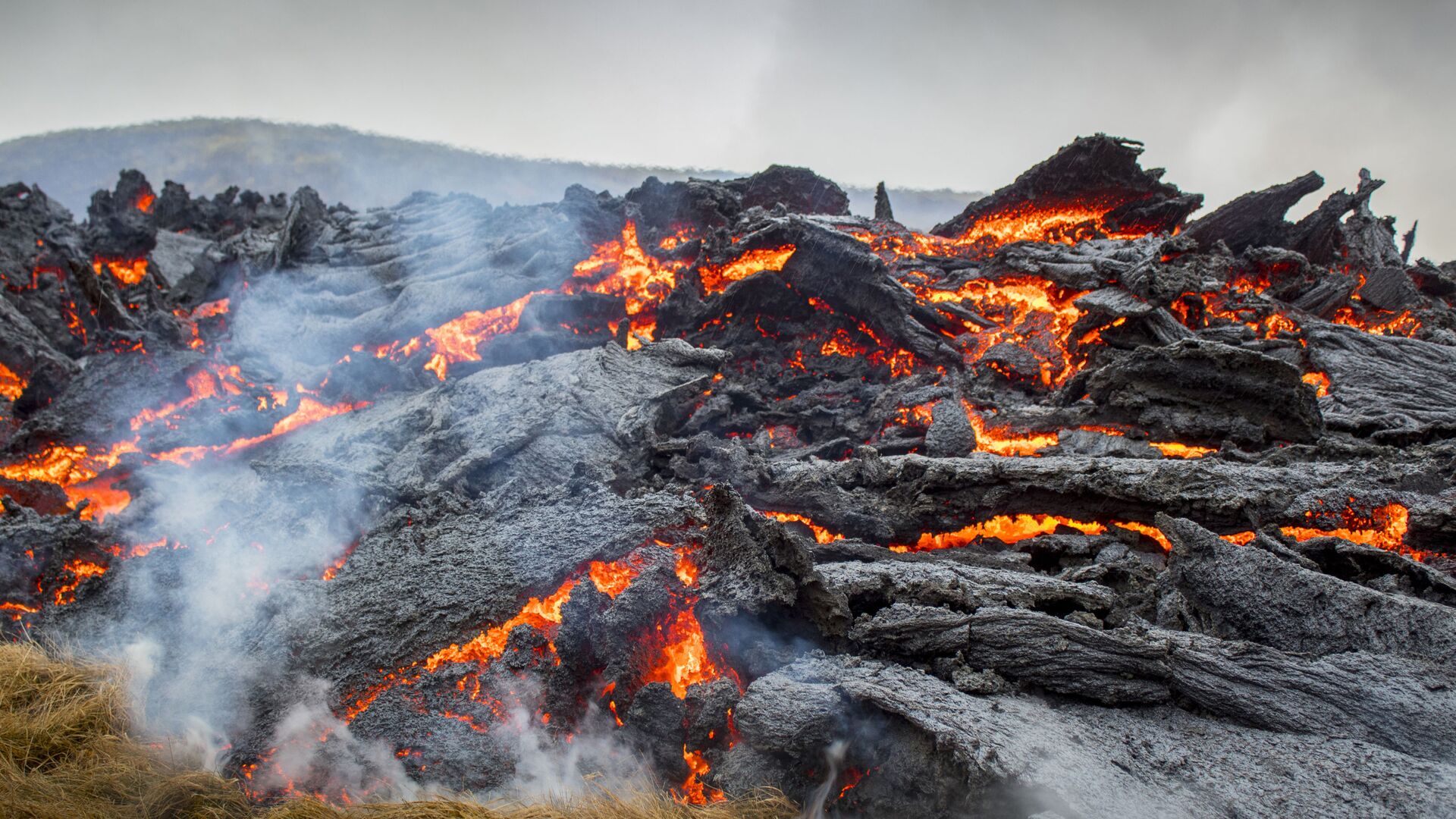https://sputnikglobe.com/20210823/icelands-volcanic-eruptions-to-be-used-as-test-range-for-mars-mission-1083689712.html
Iceland's Volcanic Eruptions to Be Used as Test Range for Mars Mission
Iceland's Volcanic Eruptions to Be Used as Test Range for Mars Mission
Sputnik International
With its barren icefields, huge lava fields, and constant volcanic activity, Iceland has been described as the perfect substitute for the rugged volcanic... 23.08.2021, Sputnik International
2021-08-23T06:53+0000
2021-08-23T06:53+0000
2021-08-23T06:53+0000
europe
world
newsfeed
iceland
volcano
mars
https://cdn1.img.sputnikglobe.com/img/07e5/03/16/1082414980_0:160:3073:1888_1920x0_80_0_0_d007998a5d5a16f7158d6ffab72df5fa.jpg
A recent series of earthquakes and volcanic eruptions of ranging severity in Iceland has provided scientists with a rare opportunity to collect data, that is often lost in more hazardous or remote locations.Planetary volcanologist Christopher Hamilton of the University of Arizona and the University of Iceland has been using the island's unique terrain in the Geldingadalir Valley, which saw some 30,000 earthquakes in March alone, to test a drone aimed for a Mars flight.Hamilton earlier received a three-million-dollar grant from NASA to develop a drone that will fly on Mars. It's called RAVEN, which stands for Rover Aerial Vehicle Exploration Network, CBS News reported.According to Hamilton, instruments used in space need to be tested in different environments. He described Iceland as the perfect substitute for the rugged volcanic landscape found on Mars. With its barren icefields, huge lava fields, and constant volcanic activity, Iceland seems to the perfect test environment for the drone project.The RAVEN drone will explore previously inaccessible areas on Mars. It will work in conjunction with a rover by flying ahead of it and sending back data to generate 3D maps. It will also have a claw to retrieve Martian rocks and send them to the rover.According to Hamilton, drones have "completely revolutionised" fieldwork, providing a "radically new paradigm" for exploring rugged terrains.RAVEN is scheduled to be a three-year project. Christopher Hamilton's team hopes to test a prototype by 2022, and to publish technological recommendations for NASA by 2023.
iceland
mars
Sputnik International
feedback@sputniknews.com
+74956456601
MIA „Rosiya Segodnya“
2021
News
en_EN
Sputnik International
feedback@sputniknews.com
+74956456601
MIA „Rosiya Segodnya“
Sputnik International
feedback@sputniknews.com
+74956456601
MIA „Rosiya Segodnya“
europe, newsfeed, iceland, volcano, mars
europe, newsfeed, iceland, volcano, mars
Iceland's Volcanic Eruptions to Be Used as Test Range for Mars Mission
With its barren icefields, huge lava fields, and constant volcanic activity, Iceland has been described as the perfect substitute for the rugged volcanic landscape found on Mars.
A recent series of earthquakes and volcanic eruptions of ranging severity in Iceland has provided scientists with a rare opportunity to collect data, that is often lost in more hazardous or remote locations.
Planetary volcanologist Christopher Hamilton of the University of Arizona and the University of Iceland has been using the island's unique terrain in the Geldingadalir Valley, which saw some 30,000 earthquakes in March alone, to test a drone aimed for a Mars flight.
Hamilton earlier received a three-million-dollar grant from NASA to develop a drone that will fly on Mars. It's called RAVEN, which stands for Rover Aerial Vehicle Exploration Network, CBS News
reported.
According to Hamilton, instruments used in space need to be tested in different environments. He described Iceland as the perfect substitute for the
rugged volcanic landscape found on Mars. With its barren icefields,
huge lava fields, and constant volcanic activity, Iceland seems to the perfect test environment for the drone project.
"I came here to be able to use this as a window to study other planets", Hamilton told CBS News. "The landscape here, with relatively barren vegetation, is very similar to what we see in the Martian environment. This is a truly transformative technology, and one of the things that we're testing in Iceland are the next generation of systems like that".
The RAVEN drone will explore previously inaccessible areas on Mars. It will work in conjunction with a rover by flying ahead of it and sending back data to generate 3D maps. It will also have a claw to retrieve Martian rocks and send them to the rover.
According to Hamilton, drones have "completely revolutionised" fieldwork, providing a "radically new paradigm" for exploring rugged terrains.
RAVEN is scheduled to be a three-year project. Christopher Hamilton's team hopes to test a prototype by 2022, and to publish technological recommendations for NASA by 2023.




